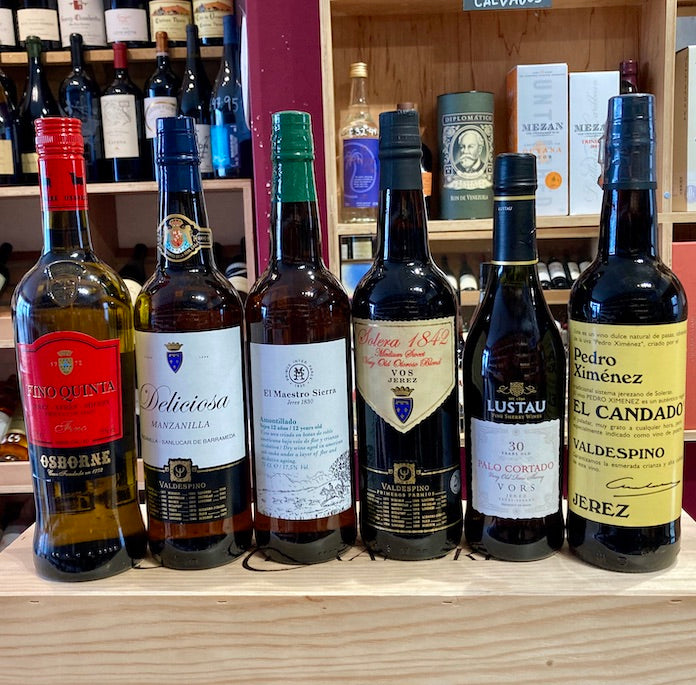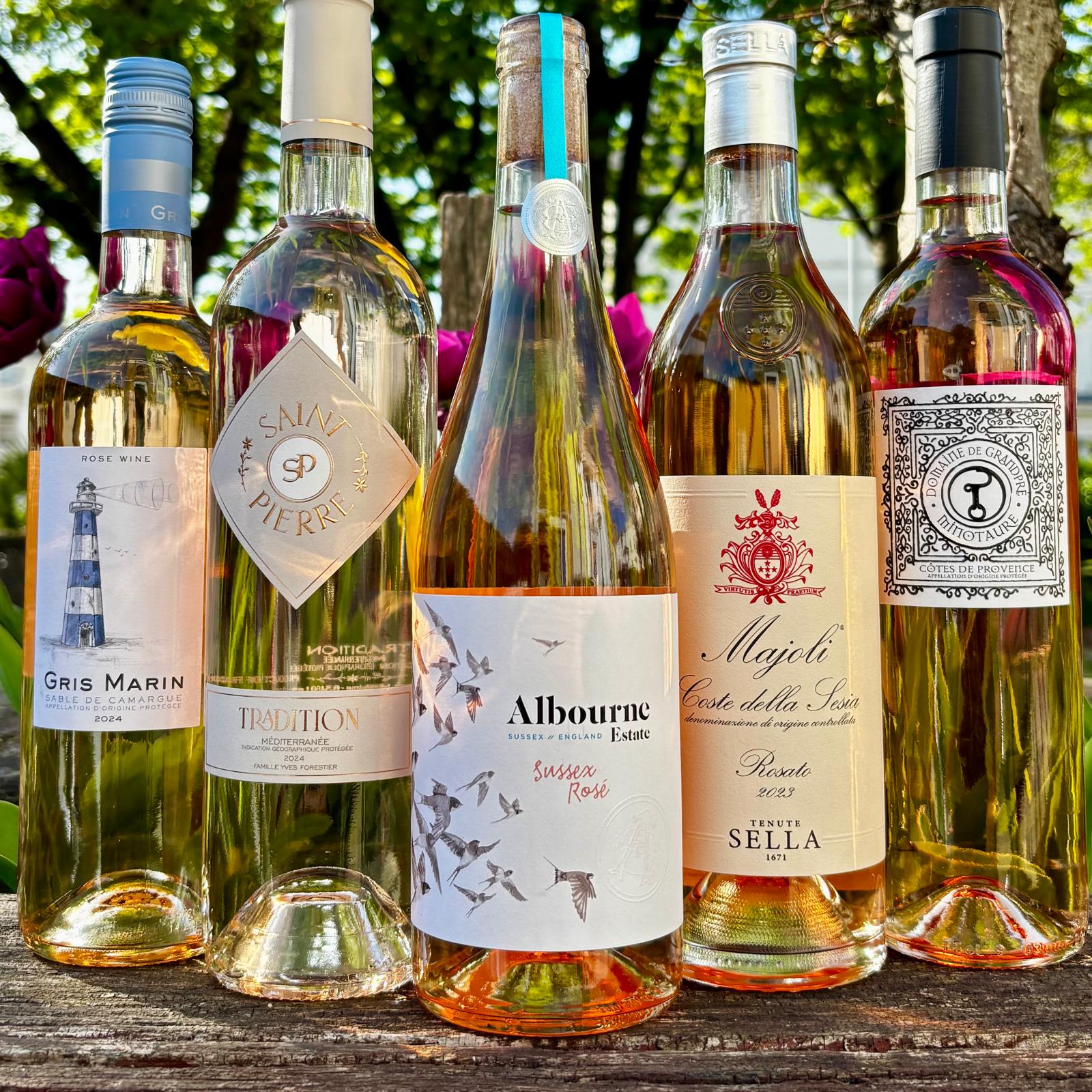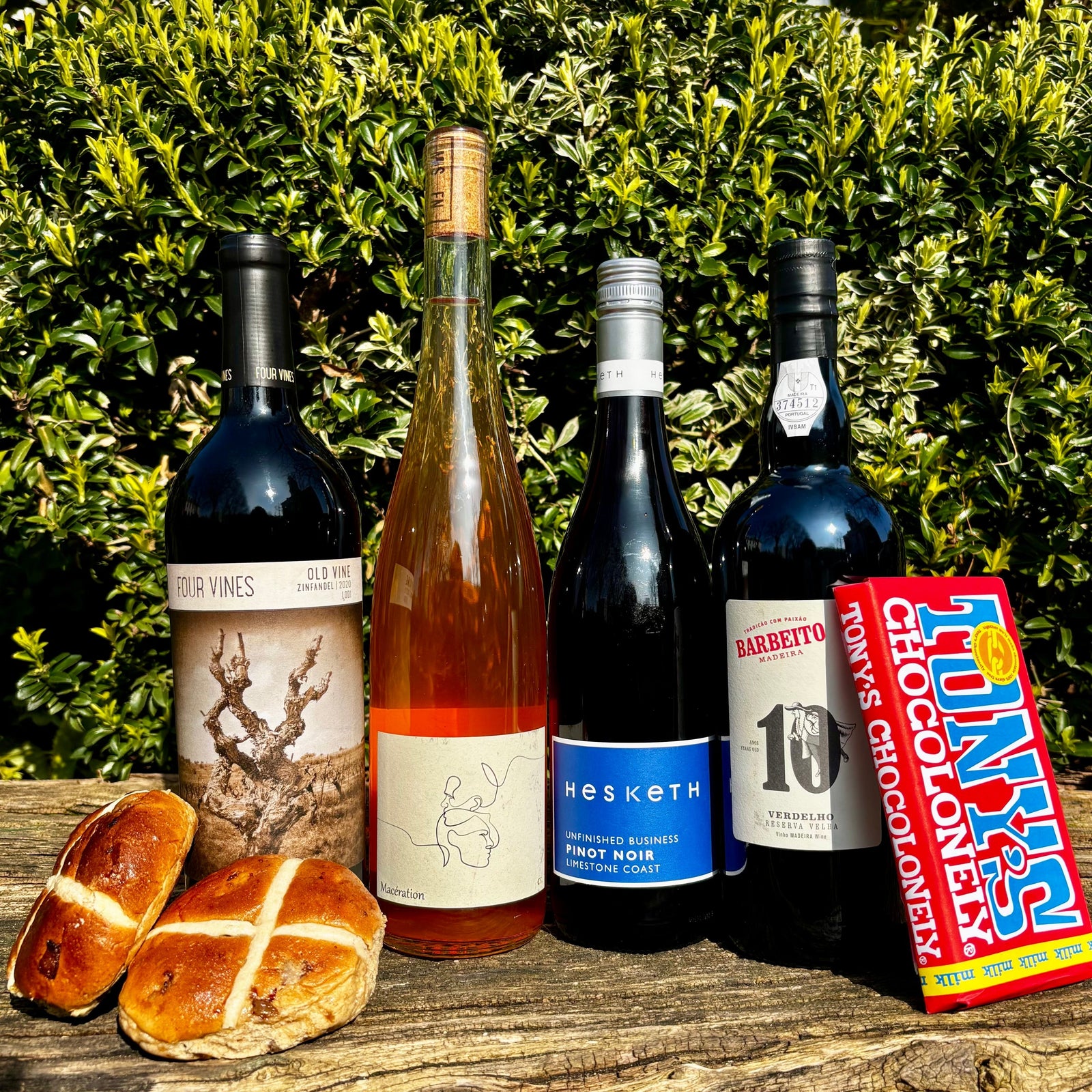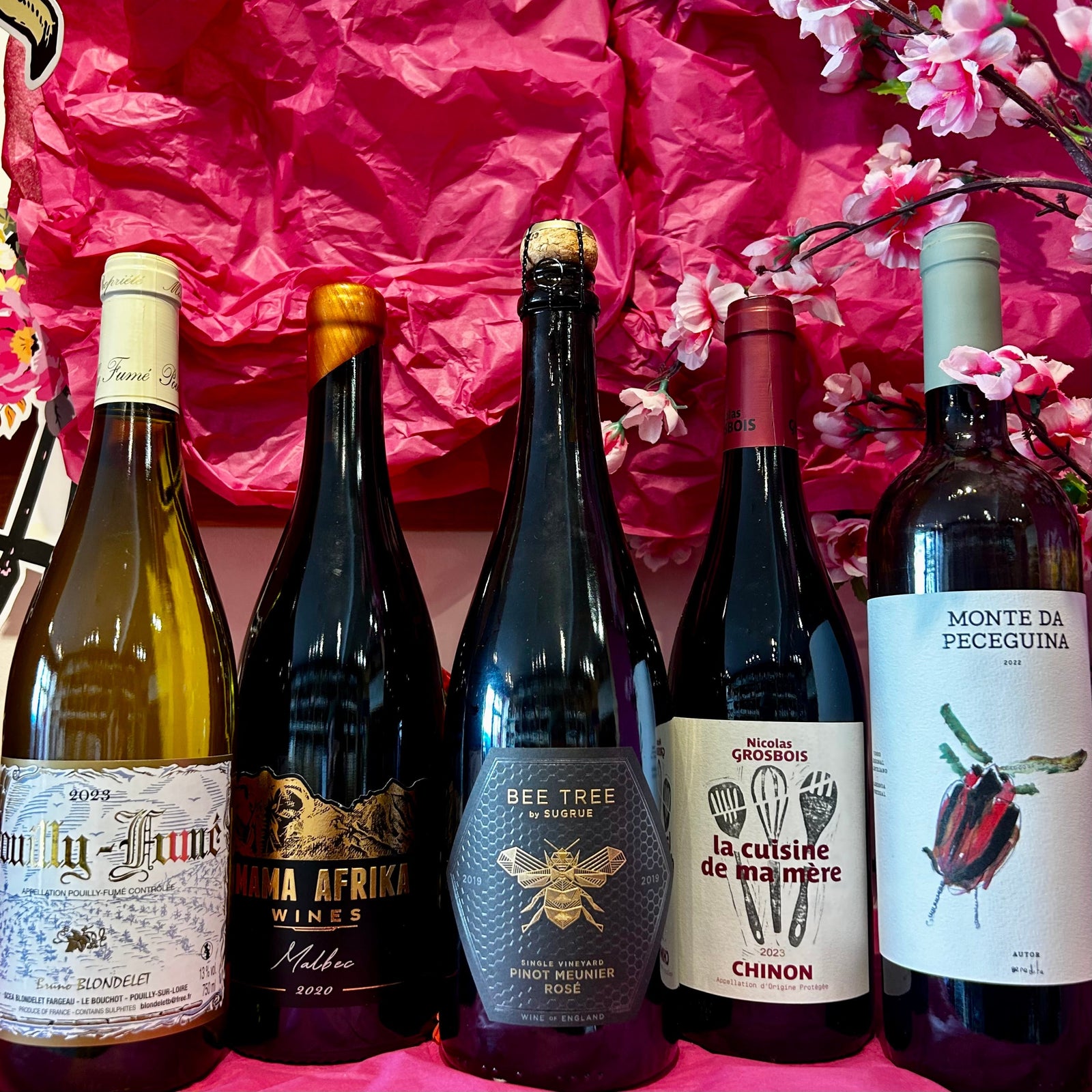
Sherry: the adventure starts here
Have you noticed the wine world has been trying to get you into sherry for a few years now? Maybe you have a friend who keeps shoving a glass of Manzanilla under your nose and demanding you try it with a fistful of smoked almonds. Or perhaps you’re that friend and you’re here for some tips on how to convert your circle to the myriad joys of quality sherry.
Either way, we hope this Butler’s Guide succeeds in turning a few heads on the fortified wines of Jerez. There’s a good reason why drinkers in the know keep banging the sherry drum. It’s unquestionably one of the most undervalued, versatile, food-loving wines out there. Get into it before it finally takes off (and itwill take off) and you’re opening a world of unique pleasures at bargain prices.
What exactly is Sherry?
It’s… well it’s complicated. Sherry usually starts life as a somewhat boring dry white wine, made from the Palomino Fino grape, grown in the crusty whitealbariza soils around Jerez in Andalucia. So far, so unexciting. But the thing about sherry is that it isn’t a wine ‘made in the vineyard’ and the neutrality of the base wine is actually a benefit. The magic of sherry all happens in the winery.

Image courtesy of sherry.wine
The base wines are transported to the Sherry bodegas in the town of Jerez (or coastal Sanlúcar de Barrameda in the case of Manzanilla). There, they enter the mythical solera - a system of interconnected ancient barrels that slowly alchemise their contents into the various thrilling types of sherry raved over by wine nuts everywhere.
New wines gradually work their way through the solera system, being blended into older wines as they go, so that by the time they reach the final barrel, they’re mixed in with remnants of sherry many decades - sometimes centuries - old. This ‘fractional blending’ process is crucial, since wines must spend at least two years in the solera system before they can be released as sherries.

Image courtesy of sherrynotes.com
What does Sherry taste like?
It’s… well it’s complicated. There are at least six distinct types of serious sherry and they all have their own special flavour profiles. Most are dry, a couple are sweet. But there are two common factors: fortification and age. All sherries are fortified up to at least 15% alcohol, and all are matured in the controlled presence of oxygen. The latter step removes fruit flavours and replaces them with all sorts of deliciously tangy savoury things (Pedro Ximenez is the exception here; we’ll get to that below).
For newcomers to sherry, particularly the pale styles like Fino and Manzanilla, the key is not to arrive expecting a fresh, fruity Sauvignon-style wine. The dryness can be a challenge at first - dry sherries are probably the driest wine style there is. And the way these wines are deliberately aged puts a lot of people off. But honestly, stick with it, push past it. Once you’ve recalibrated your palate, particularly in the presence of food, wondrous things await.
Foods that love Sherry
Sherry could well be the ultimate food wine. It traditionally matches up with local Andalucian fare, but the different types of sherry are friends to foods from all over the world. Here are a few suggestions to start you off:
Fino:Salted nuts, green olives, cured ham, sushi
Manzanilla:Smoked almonds, seafood (especially boquerones)
Amontillado:Hard salty cheeses, Iberico ham, meaty paellas
Dry Oloroso/Palo Cortado:Aged Cheddar, Gruyère or Gouda, BBQ pulled pork, roast goose
Sweet Oloroso:Blue cheese, pecan pie, Christmas cake
Pedro Ximenez:Top-quality Madagascar vanilla ice cream
What are the different types of Sherry?
Still with me? Good. On to those six all-important sherry styles, including a stellar example of each from the Butler’s range.
Fino Sherry
The Fino style of sherry is pale, fresh, delicate and drier than Richard Ayoade. Its characteristic flavours (bread dough, almonds, green apple skin) come from the way it’s aged in the solera. Finos are aged biologically, meaning they mature under a layer of yeast called flor, which likes to hang around sherry bodegas and grow in the surface of the wines within them. The flor consumes alcohol in the wine and releases a chemical called acetaldehyde - the major contributor to the flavours found in Fino.
You can clearly see the layer of flor floating on top of the wine in this glass-ended sherry barrel:

Image courtesy of El Pantera
Butler’s Fino pick
Osborne Fino Quinta NV 75cl (£12.99)

This is a classic and very sharply-priced Fino - fresh and saline, but also intense and pungent. Like all Finos it’s amazing with Spanish nibbles like olives, salted almonds and Iberico ham, and should be enjoyed well-chilled.
Manzanilla Sherry
The big difference between Fino and Manzanilla sherries is where biological ageing takes place. It can only be called Manzanilla if it’s matured in the coastal town of Sanlúcar de Barrameda, where the flor grows thicker and maturing wines are more protected from oxygen. This makes for a slightly lighter, fresher style of sherry, often with a noticeable salty edge, thought to come from the sea air blowing in through the permanently open windows of the town’s bodegas.
Butler’s Manzanilla pick
Manzanilla Deliciosa, Valdespino (£15.99)

This aptly-named Manzanilla is deliciously mouth-watering. You get a good autolytic whiff of yeast and bread on the nose, plus hints of apple blossom. But it's on the palate that it shows its true class - crisp, dry as a bone and with that textbook Manzanilla brininess around the apple-almond core.
Oloroso Sherry
Oloroso sherry undergoes a different ageing process to Fino and Manzanilla. No flor involved: wines destined for Oloroso are fortified to 17% alcohol, which kills off the yeast and leaves only oxygen as the agent of ageing. Oxidative maturation has two main effects. First, it darkens the colour of Oloroso to the colour of conkers. Second, it transforms the flavours into things like walnuts, caramel, coffee andrancio (learn that one, impress your friends).
Oloroso comes out of the solera dry and can be bottled as such. Or it can be blended with Pedro Ximenez to create sweeter styles like this medium-dry beauty...
Butler’s Oloroso pick
Oloroso Solera 1842 NV VOS, Valdespino 75cl (£46.95)

The 1842 on the label refers to the year the solera was started, meaning there are probably a few molecules of 180-year-old sherry in every bottle we stock. It pours into the glass in a gleaming glug of mahogany. Stick your nose in and you’ll find wafts of caramel, nuts and polished wood, joined in the mouth by rich dried fruits.
Amontillado Sherry
Not all sherries that start as Fino finish up as Fino. If a wine doesn’t take to biological ageing as it’s supposed to, it’s drawn out of the Fino solera, fortified to 17% abv and matured oxidatively to become Amontillado. These dry sherries are amber in colour and combine the finesse of Fino with the nutty notes of Oloroso.
Butler’s Amontillado pick
El Maestro Sierra 12 Year Old Amontillado 75cl (£31.49)

This Amontillado, from one of the few all-female-run sherry bodegas, is such a deft balancing act. It’s subtle, salty and elegant up front but packs an intensely complex, earthy punch. There’s no SO2 added and filtering is kept to a minimum, so great for fans of low-intervention wines too.
Palo Cortado Sherry
Somewhere in the mysterious zone between Oloroso and Amontillado sits Palo Cortado. Sherry makers struggle to explain exactly how this style comes about, so either they’re keeping it secret or they don’t know themselves. But we should all be grateful that it does, because it’s as delicious as it is rare, combining the lifted orange-peel aromas of Amontillado with the body and heft of Oloroso.
Butler’s Palo Cortado pick
Lustau VORS Palo Cortado 30 Year Old 50cl(£57)

This hyper-exclusive Palo Cortado won a Decanter Platinum best-in-class award in 2016. It’s blended from only the best casks of a very old, very limited solera and comes through with flavours of old wood, hazelnuts, varnish and toffee. Like having a midnight feast on your way through to Narnia, and every bit as magical as that sounds.
Pedro Ximenez Sherry
Pedro Ximenez pushes the boundaries of what can reasonably be considered wine, but thank god the winemakers of Jerez are tinkering at those edges. PX sherry is one of the world’s sweetest wines, with sugar levels often over 500g/L. Making the base wine is a feat in itself - Pedro Ximenez grapes are sun-dried until they’re practically raisins, before yeasts spend years struggling to turn this viscous sugary gloop into alcohol. The resulting wine is fortified then aged oxidatively to intensify the raisin, fig, treacle and liquorice flavours. A treat like no other.
Butler’s Pedro Ximenez pick
El Candado Pedro Ximenez, Valdespino 75cl(£23.99)

This Pedro Ximenez is liquid Christmas cake. It’s black in the glass, unctuously sweet and delivers a panoply of sticky figs, raisins and prunes, plus a flicker of liquorice. There’s just enough acidity on the finish to keep everything in check. And because the makers know it’s too good to share unwillingly, the lockable bottle comes complete with a little padlock and keys!
---
Thanks for reading this post. Hopefully it’s convinced you to give quality sherry a go. As ever, Team Butler is on hand to answer any questions you might have and help you share in the sherry love!









Leave a comment (all fields required)